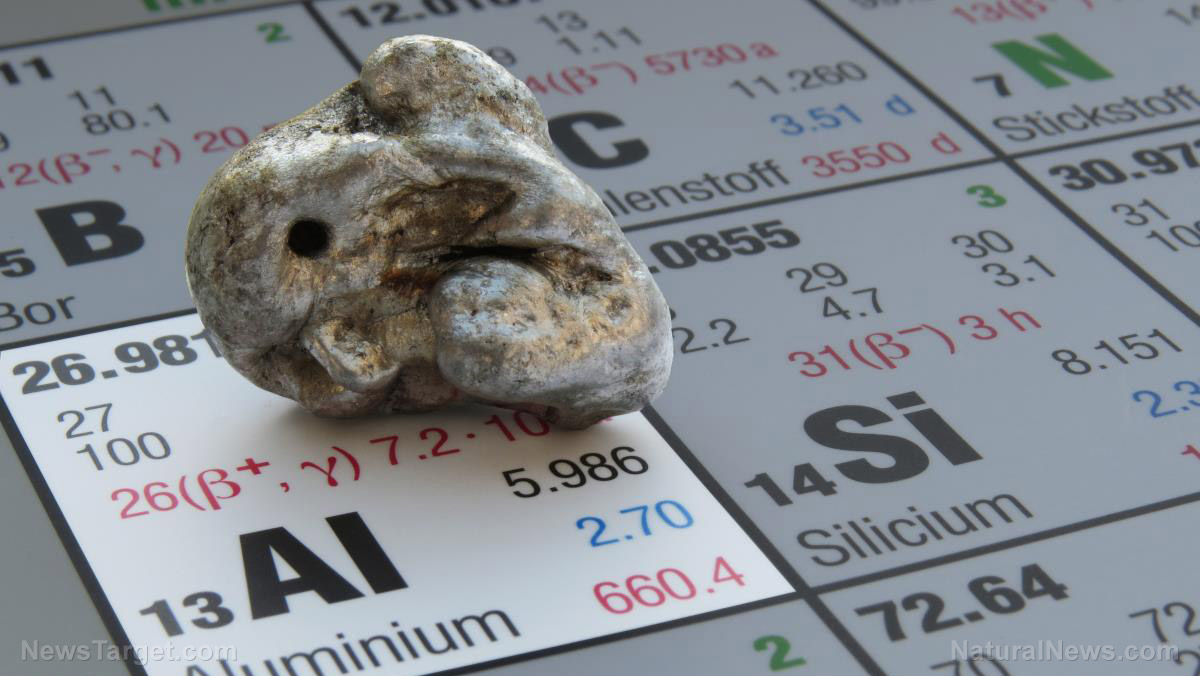
...................................................................................................................................................................
Aluminum Poisoning
Top symptoms of aluminum poisoning and toxicity
By Earl Garcia
Exposure
to high levels of aluminum may lead to potentially harmful toxicity.
Old
age and reduced kidney function are two most common risk factors associated
with aluminum poisoning.
According
to an article published in Medscape.com, aluminum toxicity is commonly found in
patients with renal impairment.
.
Long-term hemodialysis is also linked to increased odds of aluminum poisoning, as the treatment may lead to the accumulation of the heavy metal in the body.
.
Long-term hemodialysis is also linked to increased odds of aluminum poisoning, as the treatment may lead to the accumulation of the heavy metal in the body.
Symptoms
of aluminum toxicity may include the following:
Anemia
Impaired
iron absorption
Muscle
weakness
Seizures
Impaired
immunity
Aluminum
toxicity is also found to trigger:
Bone
pain
Non-healing
fractures
Spinal
deformities
Premature
osteoporosis
Other
more prominent symptoms of aluminum toxicity include:
Delayed
growth in children
Altered
mental status
Dementia
The
heavy metal is found practically everywhere: food, water, air and even soil.
This makes aluminum exposure unavoidable for most people.
Some
sources of excessive aluminum exposure include:
Foods
containing high levels of aluminum
Dusty
environments
Workplace
air contaminated with aluminum dust
Living
in areas where aluminum mining and processing take place
Living
near harmful waste sites
Living
in areas where aluminum levels are naturally high
Receiving
vaccines with aluminum
Aluminum
is the most abundant metal in the planet, and is widely known for its many uses
in various industries such as metalworking, construction, and health care.
The
heavy metal is often combined with other elements including oxygen, silicon,
and fluorine.
Aluminum
is used in the production of various common commodities such as beverage cans,
pots and pans, airplanes, siding and roofing, and foil.
According
to the Center for Disease Control and Prevention (CDC)’s Agency for Toxic
Substances & Disease Registry (ATSDR), the heavy metal is also used in
water treatment and abrasives, as well as medications and personal care
products including antacids, astringents, buffered aspirin, food additives, and
antiperspirants.
The
ATSDR cautioned that excessive aluminum exposure is tied to adverse
musculoskeletal, neurological, and respiratory conditions.
Certain
activities involving aluminum use are also found to spur adverse effects on
both human health and the environment.
”Coal burning by … electric utilities, produces heavy
ash that settles out, as well as fly ash that formally went up the smokestack into
the atmosphere, but is now captured and stored because of its well-known
adverse human health effects and damage to the environment…
“Such clandestine geoengineering activities exposed
humanity and Earth’s biota to highly mobilized aluminum, a toxic substance not
generally found in the natural environment and one for which no natural
immunity had evolved.
“During the period of coal fly ash utilization for
clandestine geoengineering, aluminum-implicated neurological diseases
experienced explosive growth profiles, including autism, Alzheimer’s,
Parkinson’s, ADHD, and others, as well as manifold destruction of plant and
animal life,” the researchers wrote
in GeoEngineeringWatch.org.
Chemicals.News is a fact-based public education website published by
Chemicals News Features, LLC.


No comments:
Post a Comment